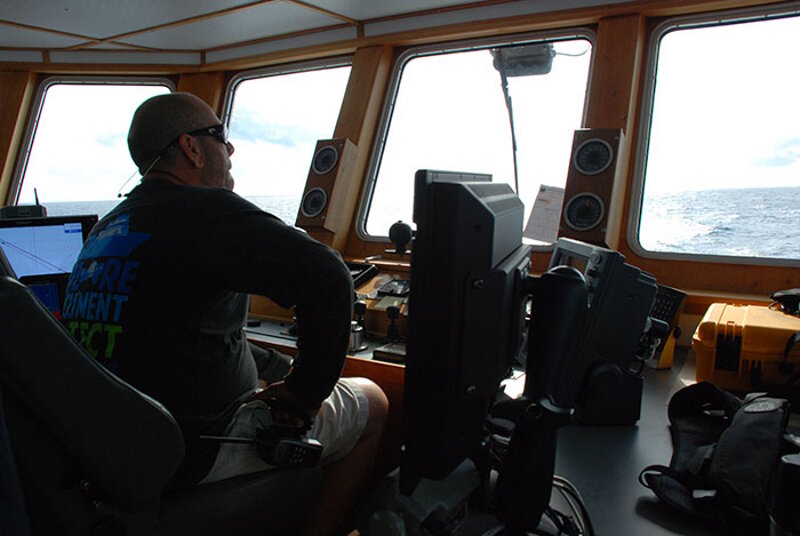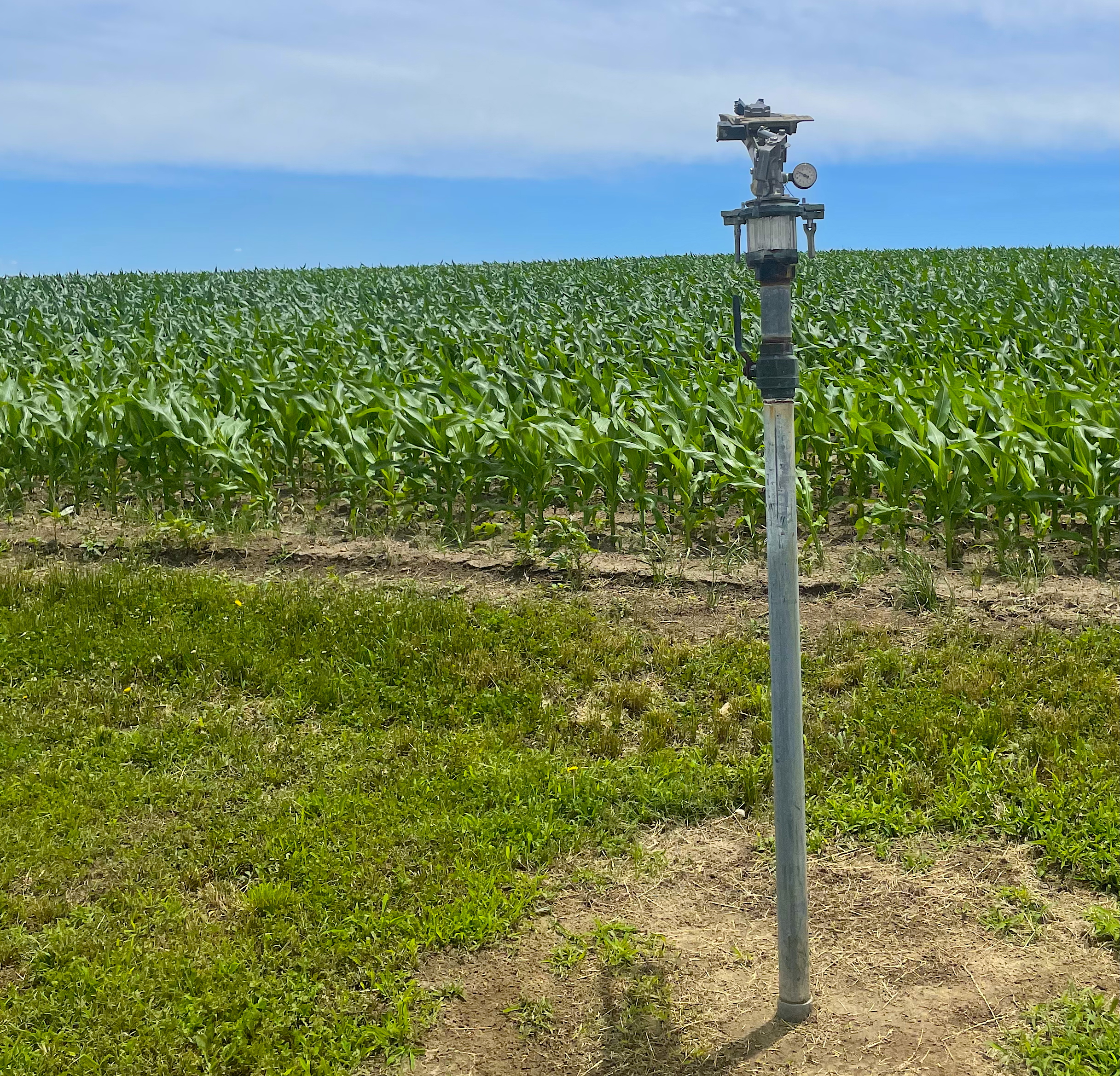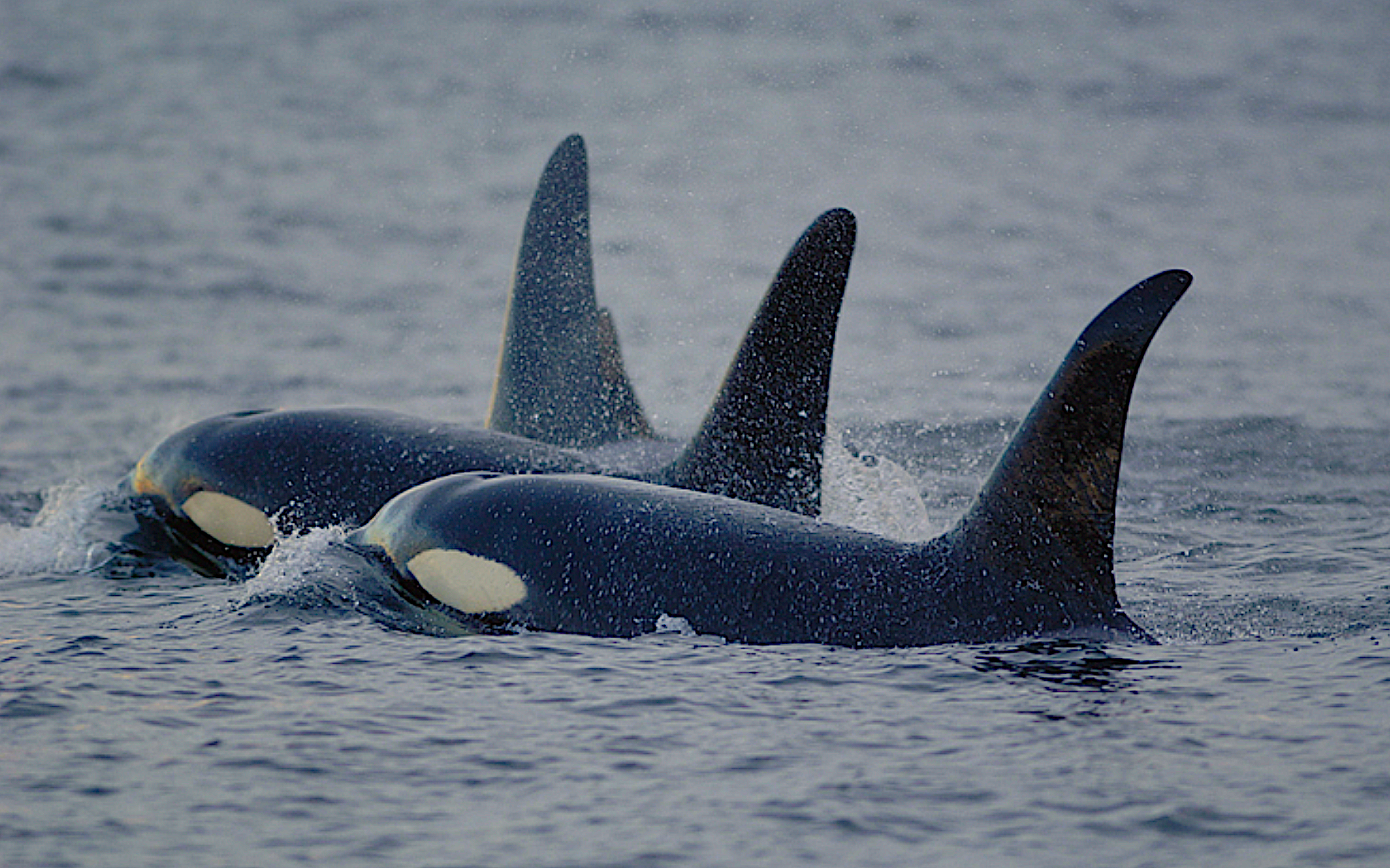Safekeepers: River, Harbour Pilots Help Ensure Safe Passage

In the greenish-blue waters of Beaufort Inlet, Bill Baily stands on the side of a pilot boat ready to jump ship. As the Rough Point slows down, getting within a few yards of the port side of a U.S. Navy ship, Baily watches the position of his boat.
Timing is everything when stepping from the pilot boat to a big ship, says Baily.
“You time your jump when the boat is coming up with a wave,” he adds. “On a calm day, you just have to step across a few feet. When it is rough, the boat can be rolling so much that it is a 15-foot difference between when it is going down and up.”
When the pilot boat rises and gets so close to the ship that it appears the two could collide, Baily steps a couple of feet across the water onto a ladder.
With a Navy crew watching, he climbs the ladder to the bridge of the USS Ashland, which is heading to port to pick up U.S. Marines.
As a veteran harbor pilot, Baily will help guide the ship from the sea buoy that is six miles offshore into the harbor at the Port of Morehead City.
“Harbor pilots are very important in maintaining safe passage of ships — from sea buoy to dock,” says Rex Edwards, director of business development and operations at the Morehead City port. “Local knowledge is invaluable to a ship’s captain, especially if it is a captain’s first time in the Morehead City port. The harbor pilots make the ship’s transit through the channel safe for all of us.”
Baily is one of three Morehead City harbor pilots who guide both Navy and commercial vessels through a 450-foot wide channel dividing the sand bars of Beaufort Inlet.
North Carolina requires every foreign vessel and every registered U.S. vessel more than 60 tons to utilize a state-licensed pilot — incoming and outgoing — in the waters of the Morehead City harbor and Beaufort Bar, says Walter Clark, North Carolina Sea Grant coastal communities and policy specialist. “Any master of a vessel violating this law is guilty of a Class I misdemeanor,” he adds.
Harbor pilots also help protect the environment from cargo spillage and property damage.
“The pilot is the advisor, but the captain is ultimately in charge,” says Baily.
Because of the strong presence of Navy ships at the Morehead City port, tugboats also are used to bring ships into berth.
For Navy ships that are 1,000 or more feet long, three tugboats are used to turn the ship around so it can head straight into the port berth.
To avoid damaging the ships, the tugboats are equipped with fenders that have rubber tires.
RIVER PILOTS
In the Port of Wilmington 90 miles south of Morehead City, eight river pilots guide ships from a sea buoy in the Atlantic Ocean, past Bald Head and Jaybird shoals, and up the Cape Fear River.
“You have to navigate all the turns and bends in the river,” says Wes Kirby, president of the Wilmington/Cape Fear Pilots Association. “Every bend has localized shoaling.”
At times, particularly with a wind speed of more than 30 knots, Kirby says the jumps from the boat onto a ship can be quite challenging.
“We have boarded vessels in winds up to about 60 knots,” he says. “However, one pilot was caught in a sudden gale and boarded a ship in 60 knots of wind and brought the ship across the bar in 110 knots of wind. I doubt he would volunteer to ever do that again.”
“The pilot boat was jumping up and down like it was a canoe,” Kirby adds. “Luckily, we have never lost a pilot here, but we have had several injuries.”
As river pilots bring the ships close to their berth in the Wilmington port, the docking pilots take over and use tugboats to push the vessel alongside its berth. Docking pilots also use tugs to undock vessels and turn them around so they can head down the river and out to sea.
Other ports across the United States also require state-licensed pilots to bring in boats. In 2004, there were 1,170 state-licensed maritime pilots in the United States, according to the American Pilots’ Association (APA), the national trade association.
“We are generally seeing more traffic in U.S. ports,” says Scott Rainey, APA deputy director. “The ships are getting larger. We expect water commerce will increase over the next 20 years.”
In the Wilmington port — which handles commodities such as lumber and grain, as well as container business — the amount of vessel traffic has remained about the same for the last several years.
“We brought in 700 ships in 2004,” says Kirby. “Our business went down in 1998 when we lost a main container line to Charleston. Before that, we used to bring in 800 to 900 ships a year.”
At Morehead City, ship traffic dropped after Sept. 11, 2001, when phosphate exports to China were halted temporarily, leaving military, food and metal products as the primary exports and rubber as the primary import.
In 2001, the harbor pilots brought in 179 ships, compared to 170 in 2003. Because of the drop in business, Baily’s uncle, Buddy Midgett, reduced his hours to part-time. “Our income was cut,” says Midgett. “So I thought it best to step back.”
Since the 2001 terrorist attacks, security precautions at U.S ports have increased. Also, pilots — widely recognized as the “eyes and ears of a port” — have added responsibility.
Often the only U.S. citizen on a foreign ship, pilots are in a unique position to watch for threatening situations.
“After 9-11, pilots had to start carrying I.D. cards,” says Baily. “Sometimes, we have to wait for ships to be boarded by the Coast Guard. We also are more aware of what the crews are doing and the possibility of terrorist attacks.”
PILOT TRAINING
In North Carolina, as well as other coastal states, state-licensed pilots are highly trained. Most have either extensive deep-sea or tugboat experience. Others go through an extensive apprenticeship program.
Midgett, a member of the Morehead City Pilots Association, started out at age 19 as a deck hand aboard a tugboat involved in shiphandling in Norfolk.
“1 just like being on the water,” he says while looking at a tugboat picture in his Morehead City home. “It is like throwing Brer Rabbit in a briar patch. As a kid, I had a skiff or boat. I grew up on the water. We are just big boys with bigger toys.”
While working on the tugboat, Midgett got pilot’s and master’s licenses and then moved up to a docking pilot. Later, he moved to Charleston to work as a docking pilot for a private towing company.
In 1967, Midgett accepted a job with the Piner family, who had guided ships around Morehead City for many years. “The port was booming then,” he says. “There was almost a ship a day. Tobacco was king and was being exported.”
Baily began working as a pilot boat captain with the Morehead City Pilots Association in 1974 and later moved to Norfolk, where he was a docking pilot. He came back to the Morehead City association full-time in 1986.
Baily vividly recalls riding his first ship with “Capt. Buddy” — and disembarking from the ship that was headed out to sea onto the pilot boat.
“I had sweaty palms, and the boat was drifting back,” Baily says. “Capt. Buddy had a walkie-talkie and told me the boat was out of gas and three feet from the ladder.”
But Baily and Midgett made it safely onto the boat.
By the time Baily had been captain of the pilot boat for several months, he was hooked.
“It is not a like a 9-to-5 job,” he says. “I like running boats and being on the water. However, sometimes, it is a real pain when it is windy, rainy or foggy or dark. It also can be beautiful and sunny. With 15-foot seas, it takes a lot of expertise.”
Early in his career, Baily had to rescue Midgett, who fell into the water while jumping onto a ship.
“We were bringing in a big tanker,” Baily recalls. “There was a big swell from the south. The wind had shifted and was blowing a gale out of the north.”
The ship tried to “make a lee” on the side of the ship exposed to the swell, he adds.
“Capt. Buddy was on the bow of the pilot boat when a large swell hit the side of the ship, rebounded and coincided with another large incoming swell,” adds Baily. “The pilot boat rolled severely down on her side, and Capt. Buddy lost his footing.”
When the boat rolled back in the opposite direction, Midgett was thrown overboard into 55 feet of water, Baily adds. “But he wasn’t in the water long.”
In 1984, Buddy’s son, Andrew Midgett, joined the pilots’ association.
“It is hard not to do it if your dad does it,” says Andrew Midgett. “I loved being on a boat as a kid. I grew up on Bogue Sound and working around tugboats. It was in me.”
Despite the pilots’ training and knowledge of local waters, mishaps occur.
Two or three years ago, Baily was guiding a ship that went aground. The ship’s variable pitch propeller got stuck in the full ahead position. The ship hit a sand shoal and rose out of the water eight feet, he says.
“However, within 24 hours, the ship was floating free and fortunately had no bottom damage,” Baily adds.
RICH HISTORY
Pilots have been around North Carolina ports for hundreds of years.
When North Carolina’s first major port development began in the 1850s at Morehead City, harbor pilots began bringing in ships through Beaufort Inlet.
In Wilmington, the river pilots became crucial during the Union blockade of the South during the Civil War. They would steam down the coastline and bring back needed supplies to the port, making Wilmington the last port open to blockade runners.
When the town finally fell in early 1865, it signaled the end of the Confederates’ hopes.
However, the takeover by Federal troops during the Civil War and a damaging storm in 1876 hampered the port development for many years, according to the North Carolina Ports Authority Web site.
In the years before modern dredging and channel deepening of the river, known ominously as the Cape Fear, captains used local pilots to maneuver the sandbars at the entrance of the harbor and of Frying Pan Shoals, more than 20 miles offshore.
“Think of the captain of a large ship at Cape Fear as a blind man entering an immense, strange house, cluttered with unfamiliar furniture and other hazards, with only one entrance and one exit,” writes Jim McNeil in Masters of the Shoals.
Because of the pilots’ daring runs and narrow escapes, they often were romanticized in publications as “dandies of the town,” according to an article excerpted in Masters of the Shoals. “They wore fine ruffled shirts, tight fitting boots, long black coats and plug hats,” the author writes. “Every boy hoped some day to become a pilot.”
20TH CENTURY
The river pilots, who sailed schooners and hung out on the Bald Head Island beach, were the guides to these “blind men” and kept the captains from wrecking their ships.
“Before 1921, pilots worked for themselves and competed for business,” says Kirby. “They would race out to the ships. People would shoot at one another getting to the ships. It got crazy.”
Many pilots only worked part-time. Competition between pilots reduced their incomes to the point that they had to work in other occupations to support themselves and their families, according to Kirby.
“This resulted in a system where pilots would not go to ships in rough weather or to small ships with lower pilot tariffs because they could make easier money in other occupations.”
By 1921, the modern Wilmington/Cape Fear Pilot’s Association was started. Today, the organization is housed in an old lookout tower that overlooks the mouth of the Cape Fear in Southport. The association is governed by the Board of Commissioners of Navigation of the Cape Fear River, originally set up by the state legislature in 1784.
During the early part of the 20th century, the Piner family began running the pilot boats around Beaufort Inet.
“There was a lot of activity,” says Buddy Midgett. “Tugs and equipment were marginal. Both the pilot boats and tugs were smaller than the ones used now.”
In 1947, the Morehead City Pilots Association was formed. Now, the group is governed by the Morehead City Navigation and Pilotage Commission, set up by the state legislature in 1981. The governor appoints both commissions.
Over the years, there have been a number of port improvements, including the deepening of the Morehead City channel in 1994.
“The channel has improved dramatically from years ago when it was shallow and not maintained,” adds Buddy Midgett. “Around the Shackleford area is the most difficult part.”
In 2004, the Wilmington channel was deepened from 38 to 42 feet on 26 miles of the Cape Fear River from the ocean to the Port of Wilmington.
“The completion of the channel to the port has allowed our customers to carry more cargo because of the deeper draft,” says Jerry Moore, Port of Wilmington operations director.
In February, a new container line from North China began weekly service, adding to the South Asia and Korea trade route already served by another line.
To attract more container lines, Moore says the port plans to increase the terminal space and the number of container cranes.
Other port expansions now on the drawing boards include the development of Radio Island at Morehead City with a 2,000-foot dock, 300,000-square-foot warehouse and 40 acres of paved, open storage.
Despite port improvements, technological advances and consolidation of shipping lines, pilots continue to play an important role as safekeepers of harbors.
“Without pilots, captains would be burdened. There is so much paperwork involved in every port visit, and (captains) go to so many ports around the world that they can’t know each river and port,” says Kirby.
“Without pilots, shipping would come to a halt.”
This article was published in the Early Summer 2005 issue of Coastwatch.
For contact information and reprint requests, visit ncseagrant.ncsu.edu/coastwatch/contact/.
- Categories:


